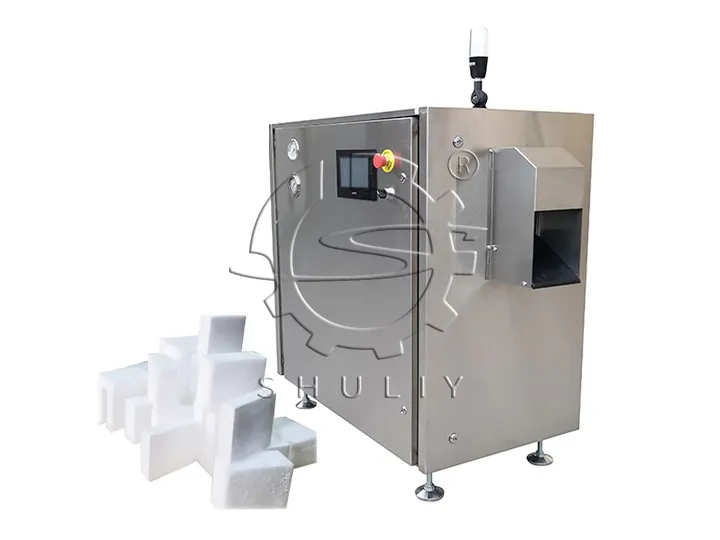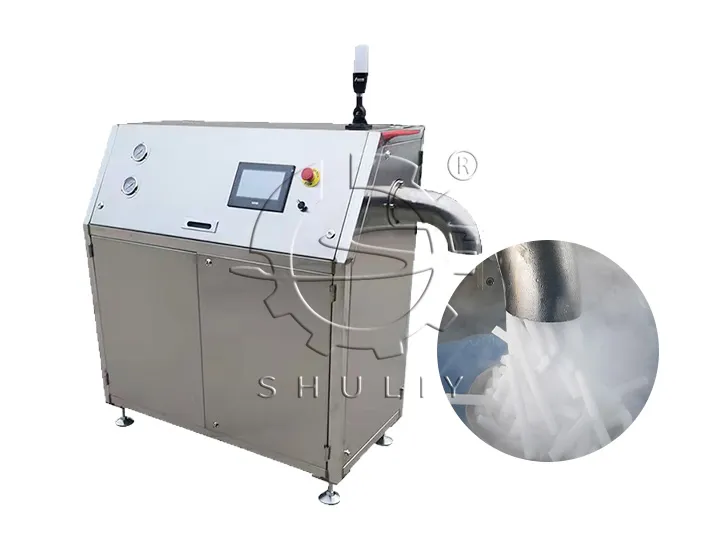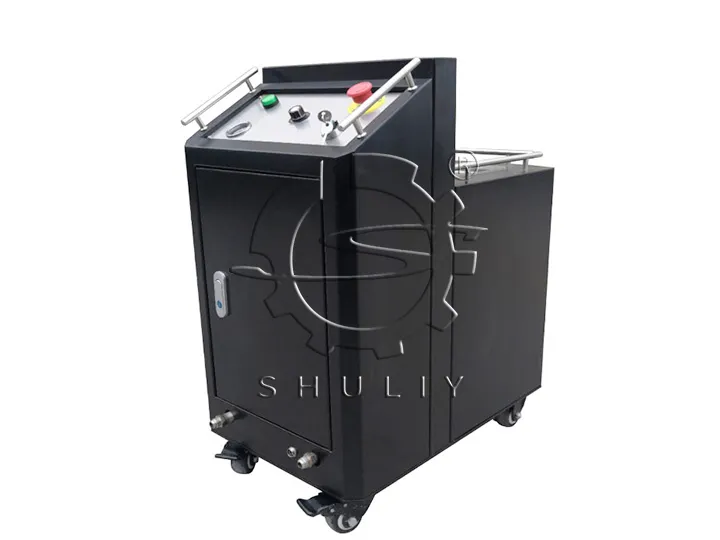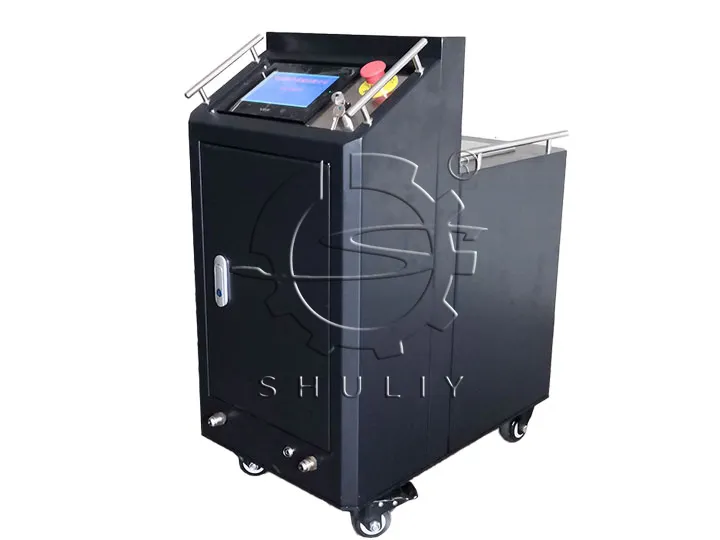Blocchi di ghiaccio secco vs. pellet: Qual è la scelta giusta per la tua azienda?
Quando un'azienda decide di produrre il proprio ghiaccio secco, una delle prime e più critiche domande è: «Dovremmo produrre blocchi o pellet?» La risposta non riguarda quale forma sia «migliore» in generale, ma quale sia più adatta alla vostra applicazione specifica. Il dibattito tra blocchi di ghiaccio secco e pellet riguarda fondamentalmente la fisica e la funzione.
Comprendere le differenze fisiche fondamentali tra questi due formati è la chiave per effettuare un investimento informato nel tipo di attrezzatura di produzione più adatto.
La scienza della sublimazione: la superficie è tutto
Sia i blocchi che i pellet sono anidride carbonica solida a -78,5°C (-109,3°F). Tuttavia, si comportano in modo molto diverso a causa di un fattore principale: il rapporto superficie/volume.
- Blocchi di ghiaccio secco: un blocco solido ha la superficie possibile più bassa rispetto al suo volume. Ciò significa che meno superficie è esposta all'aria ambiente, risultando in un tasso di sublimazione significativamente più lento (il processo di passaggio da solido a gas direttamente).
- Pellet di ghiaccio secco: una raccolta di pellet ha una superficie totale molto più ampia per lo stesso peso. Ogni pellet piccolo è circondato dall'aria, causando una sublimazione molto più rapida e il rilascio più veloce dell'energia di raffreddamento.
Questo principio singolo determina il caso d'uso ideale per ciascun formato.
Quando scegliere blocchi di ghiaccio secco: per longevità e raffreddamento in grandi quantità
Il lento tasso di sublimazione dei blocchi li rende la scelta superiore per applicazioni che richiedono raffreddamento sostenuto e a lungo termine.
Applicazioni principali:
- Spedizioni a catena del freddo a lunga distanza: quando si trasportano merci sensibili alla temperatura come prodotti farmaceutici o alimenti congelati su lunghe distanze, i blocchi sono ideali. Durano più a lungo, riducendo la necessità di ricariche di ghiaccio e garantendo l'integrità del prodotto all'arrivo.
- Stoccaggio di grandi volumi: per congelatori walk-in o grandi contenitori isolati, alcuni blocchi grandi possono mantenere temperature di congelamento per periodi prolungati con intervento minimo.
- Servizi di catering ed eventi: i blocchi possono essere posizionati in refrigeratori non elettrici per mantenere cibo e bevande freddi durante un evento senza trasformarsi in una pozza d'acqua.
Per ottenere l'alta densità necessaria a un tasso di sublimazione lento, i blocchi vengono formati sotto una forza immensa. Questo processo richiede unamacchina robusta per blocchi di ghiaccio secco, che utilizza un sistema idraulico potente per comprimere la neve di CO₂ in una forma solida e durevole.
Macchina avanzata per la produzione di blocchi di ghiaccio secco
Quando scegliere pellet di ghiaccio secco: per velocità e precisione
La potenza di raffreddamento rapida e l'alta superficie dei pellet li rendono perfetti per applicazioni che richiedono velocità, copertura e precisione.
Applicazioni principali:
Sabbiatura con ghiaccio secco: questo è il caso d'uso principale per i pellet. La loro piccola dimensione permette di essere accelerati dall'aria compressa, offrendo un metodo di pulizia potente ma non abrasivo, molto efficace per attrezzature industriali, stampi e restauri storici.
Lavorazione alimentare: i pellet possono essere mescolati direttamente nei prodotti alimentari (come carne macinata o impasti) per un rapido e uniforme abbassamento della temperatura durante la lavorazione senza aggiunta di umidità.
Laboratorio e Ricerca: nei laboratori, i pellet forniscono un raffreddamento rapido su richiesta per preservare campioni biologici o raffreddare reazioni chimiche.
La produzione di pellet di ghiaccio secco di diametro uniforme richiede un processo distinto che utilizza unamacchina per pellet di ghiaccio seccospecializzata, che extrude la neve di CO₂ attraverso una piastra a stampo per creare la dimensione desiderata.
Fare la scelta giusta: un riepilogo
La decisione tra blocco di ghiaccio secco e pellet dipende in definitiva dalla vostra esigenza principale di business.
| Caratteristica | Blocchi di ghiaccio secco | Pellet di ghiaccio secco |
|---|---|---|
| Tasso di sublimazione | Lento | Veloce |
| Funzione principale | Raffreddamento sostenuto e a lungo termine | Raffreddamento rapido e di precisione & sabbiatura |
| Ideale per | Spedizioni a lunga distanza, stoccaggio in grandi quantità | Sabbiatura con ghiaccio secco, miscelazione di alimenti |
| Gestione | Più facile per posizionamenti grandi e semplici | Migliore per processi automatizzati, miscelazione |
| Unità di produzione | Pressa a blocchi serie HR-KZ | Pelletizzatore serie HR-KL |
Analizzando i requisiti operativi principali rispetto alle proprietà fisiche di ciascun formato, è possibile selezionare con sicurezza l'attrezzatura di produzione giusta per massimizzare l'efficienza e il ritorno sull'investimento.




